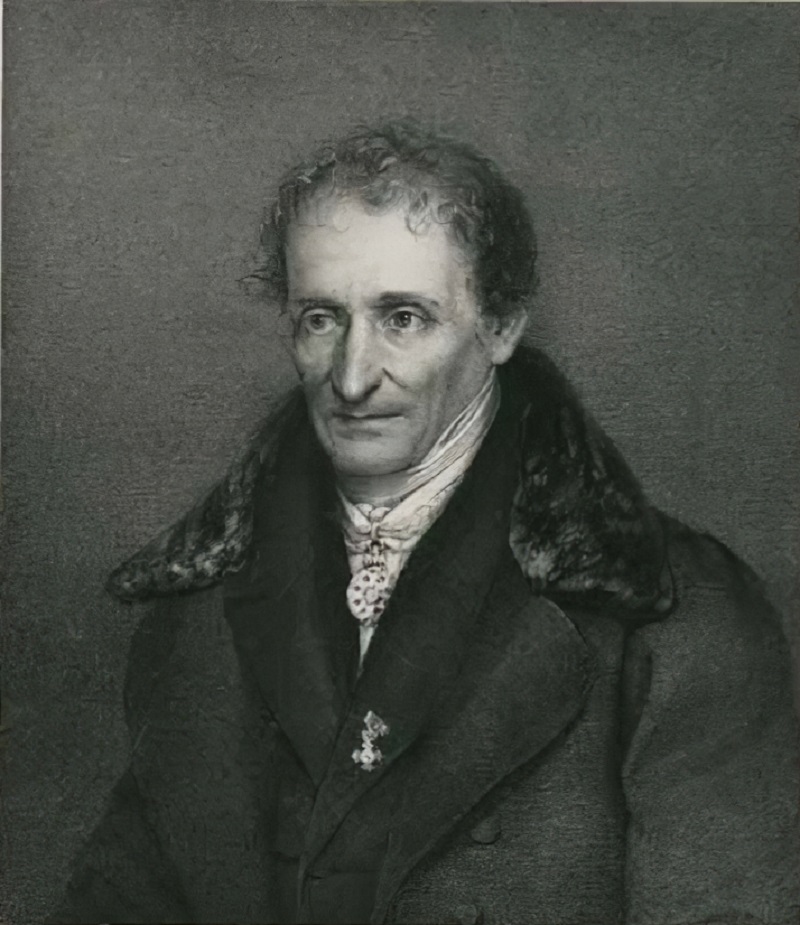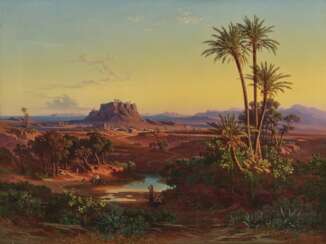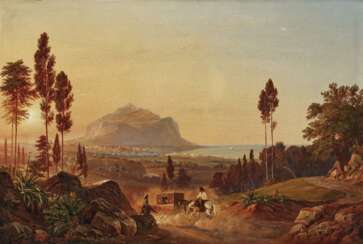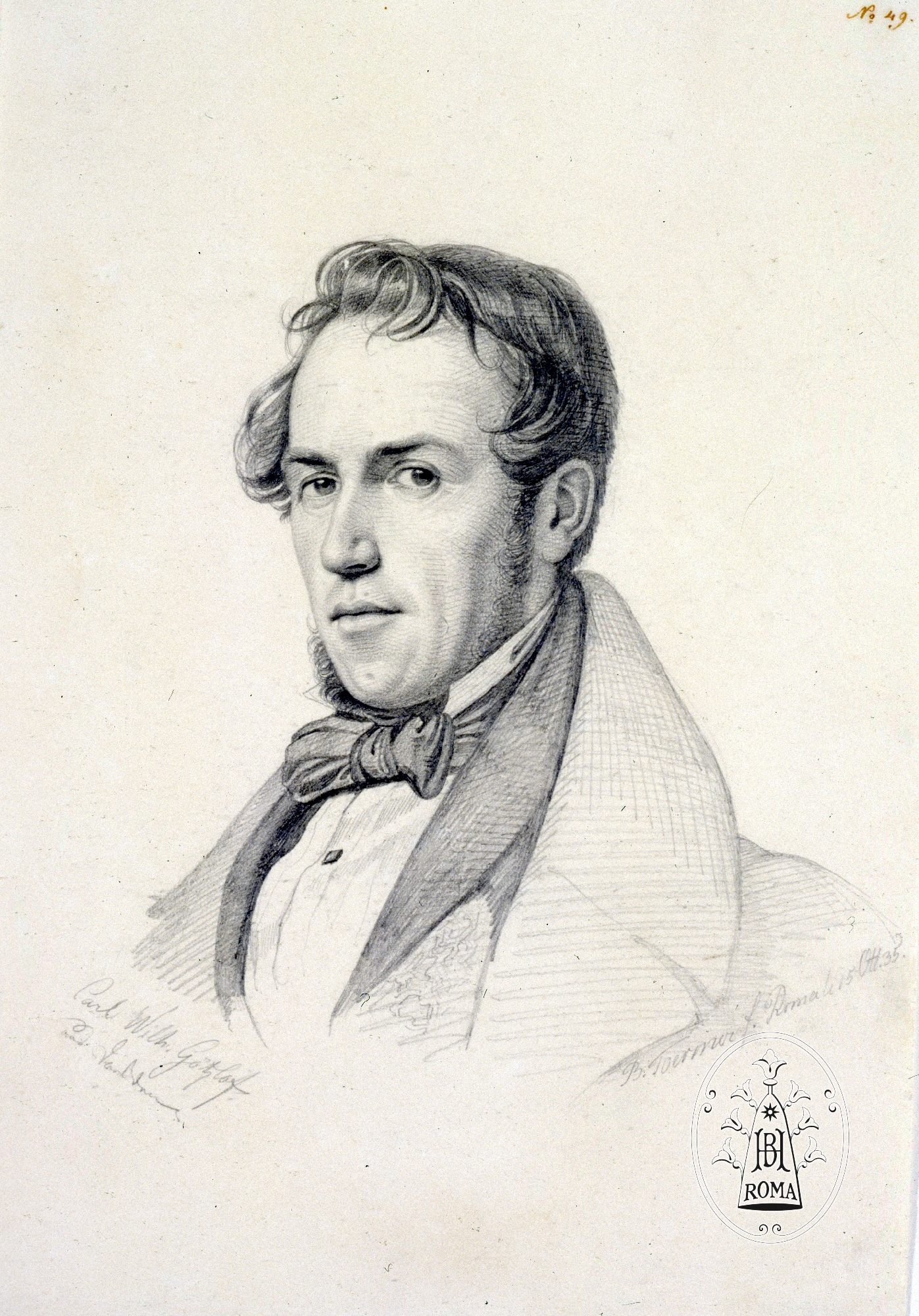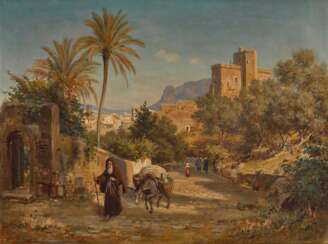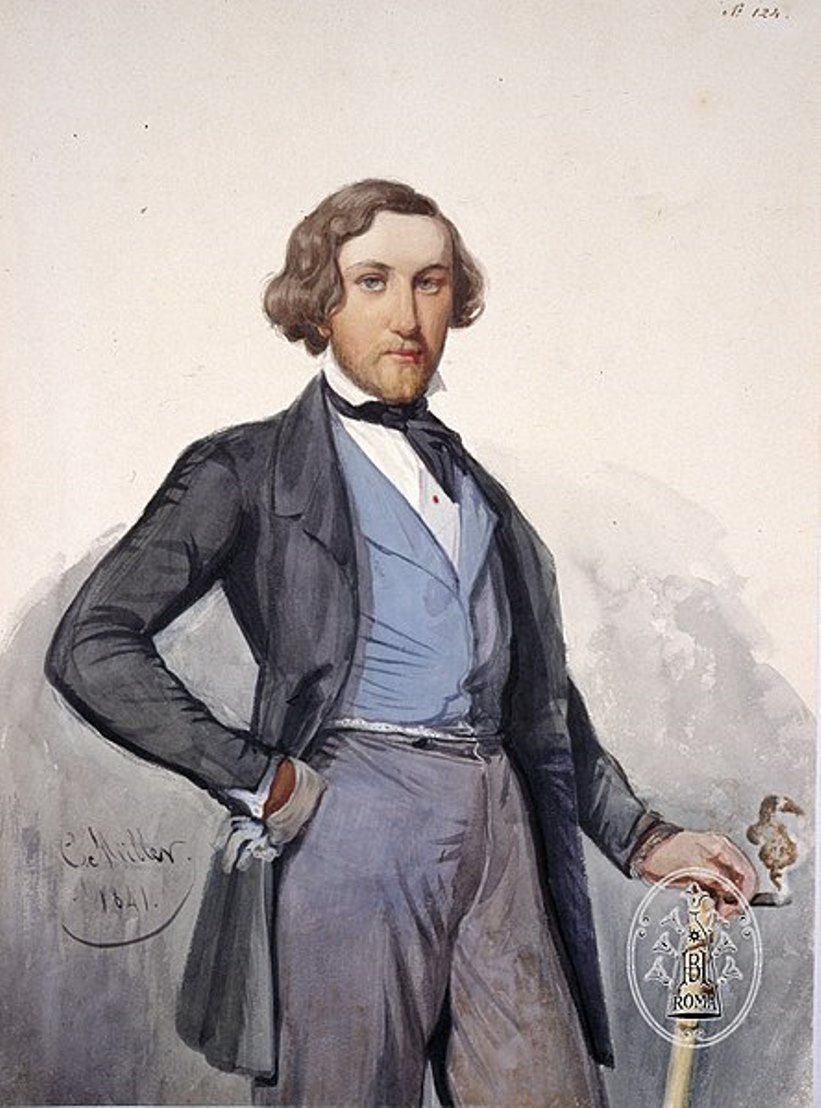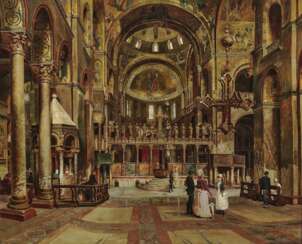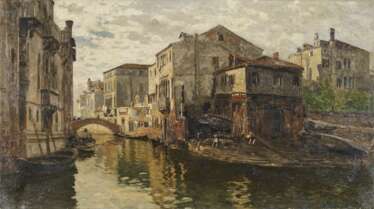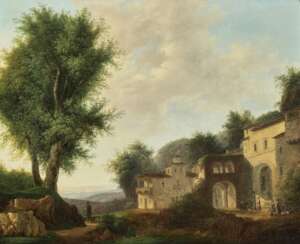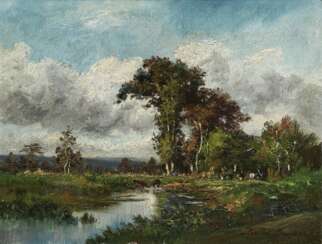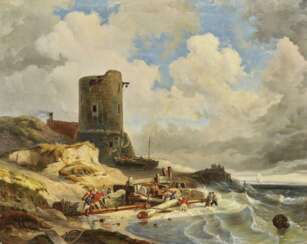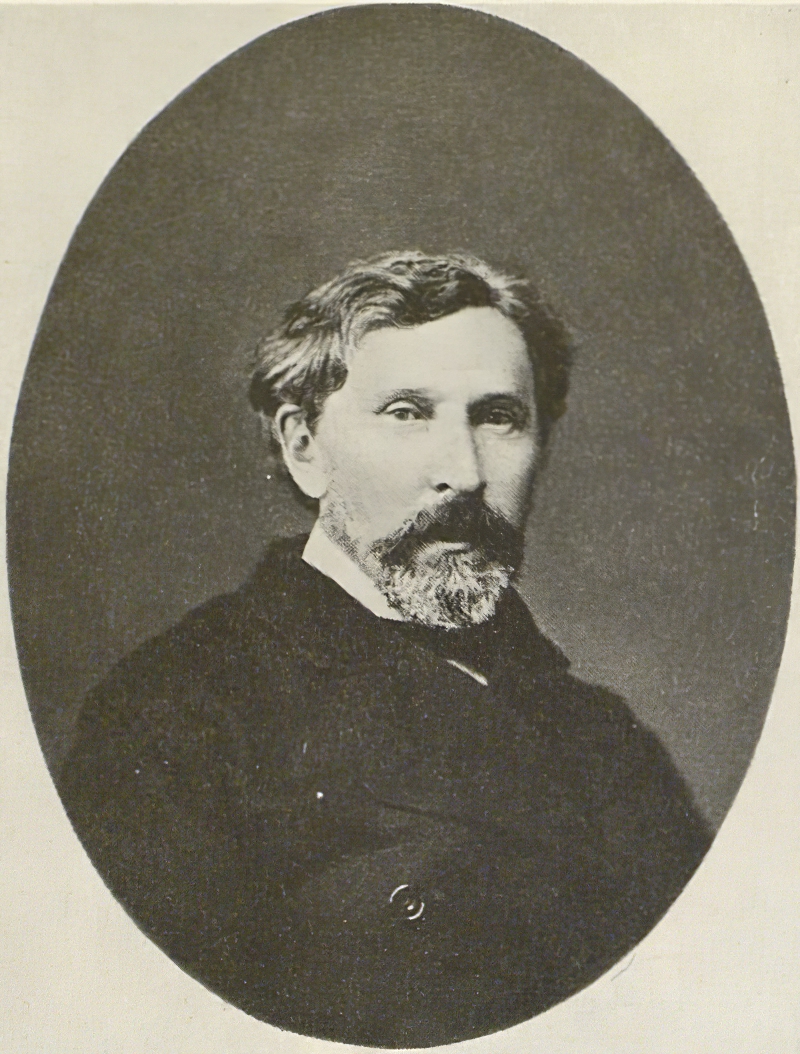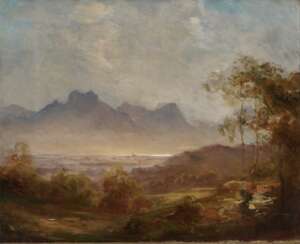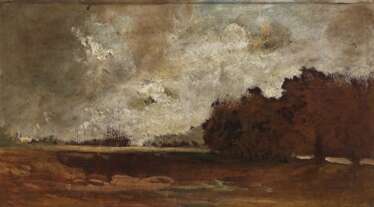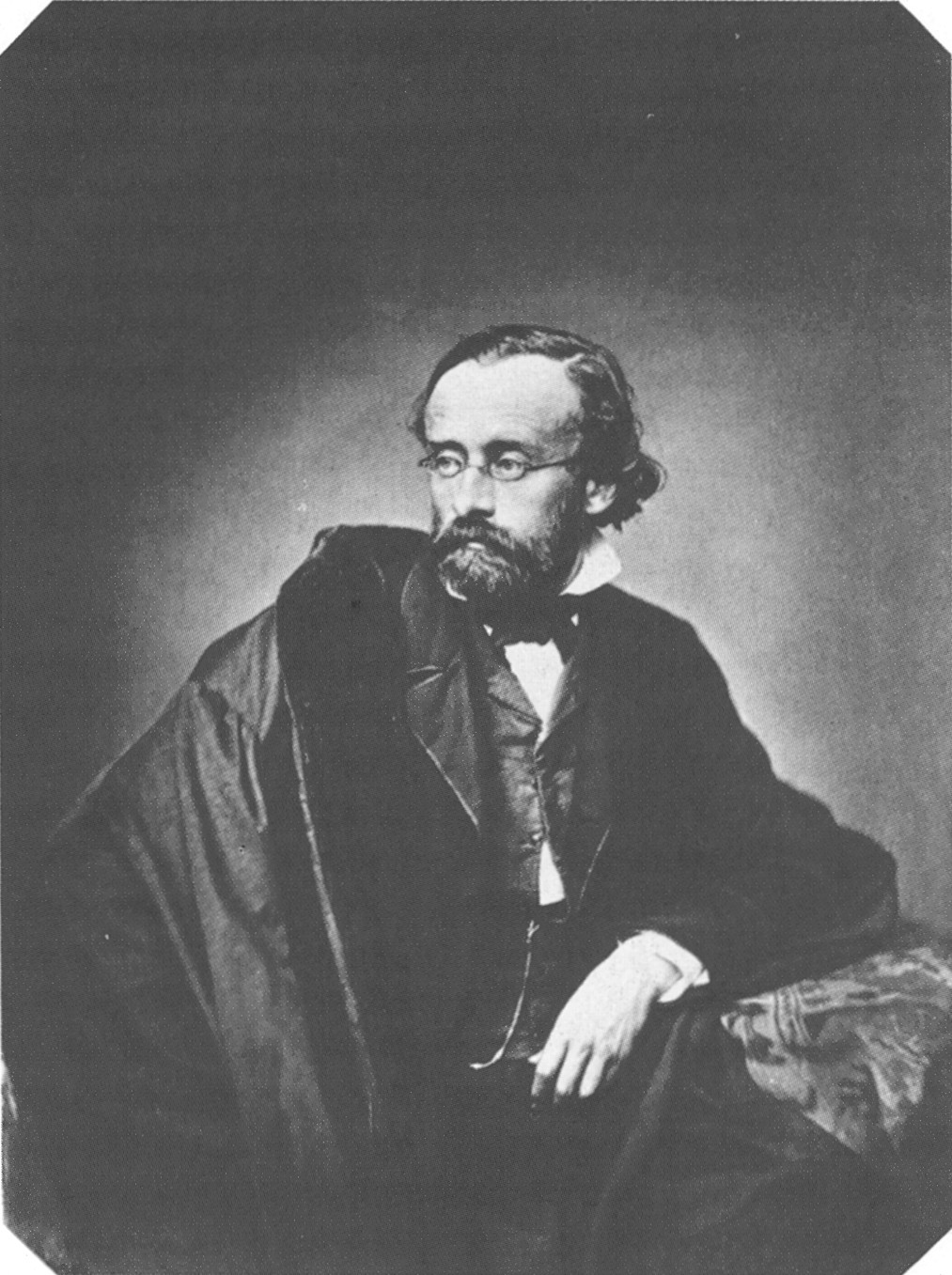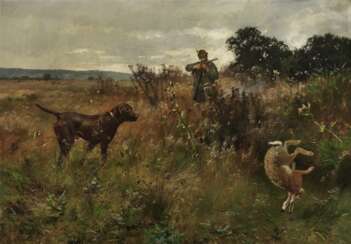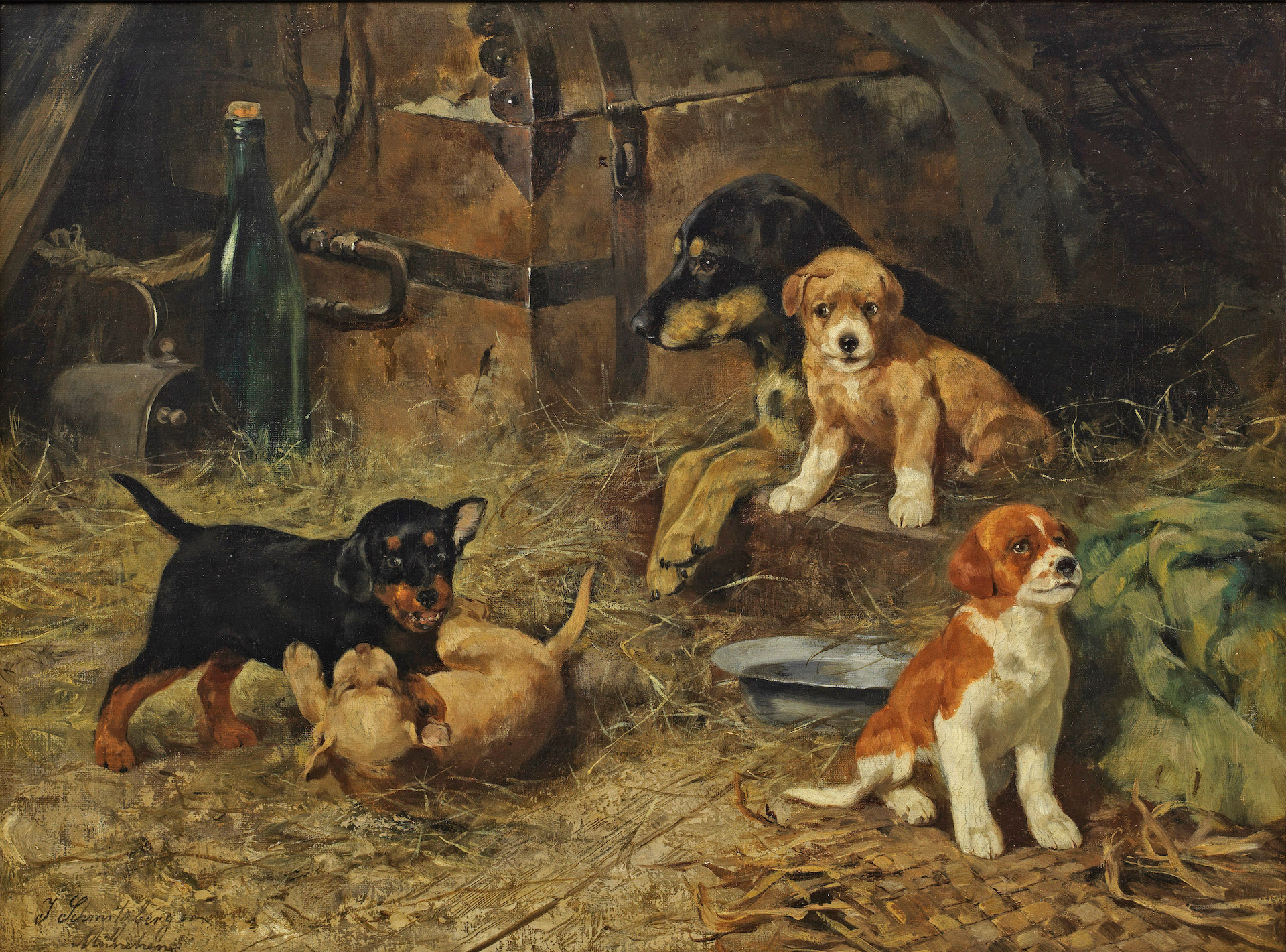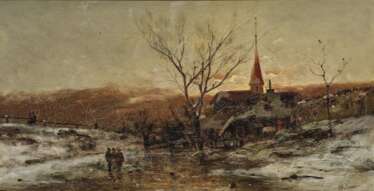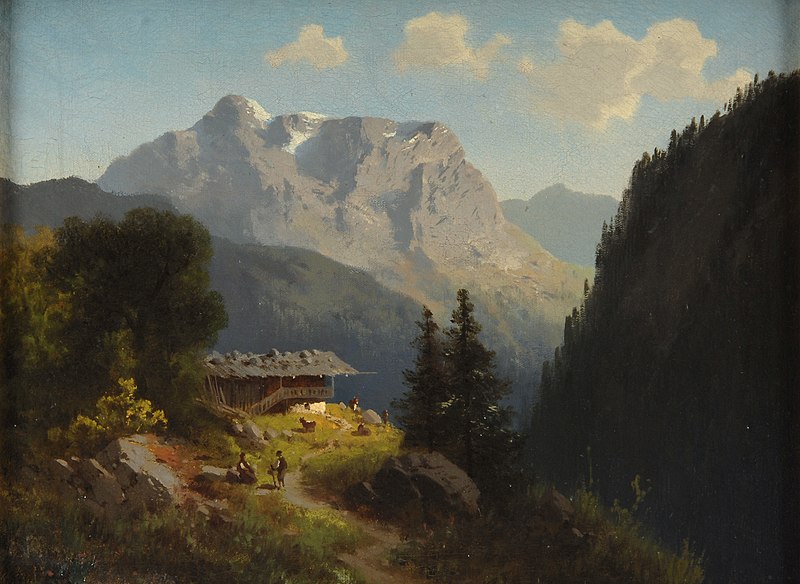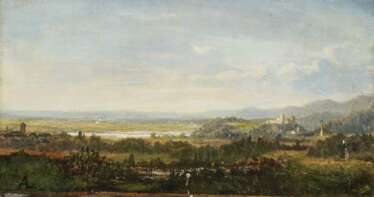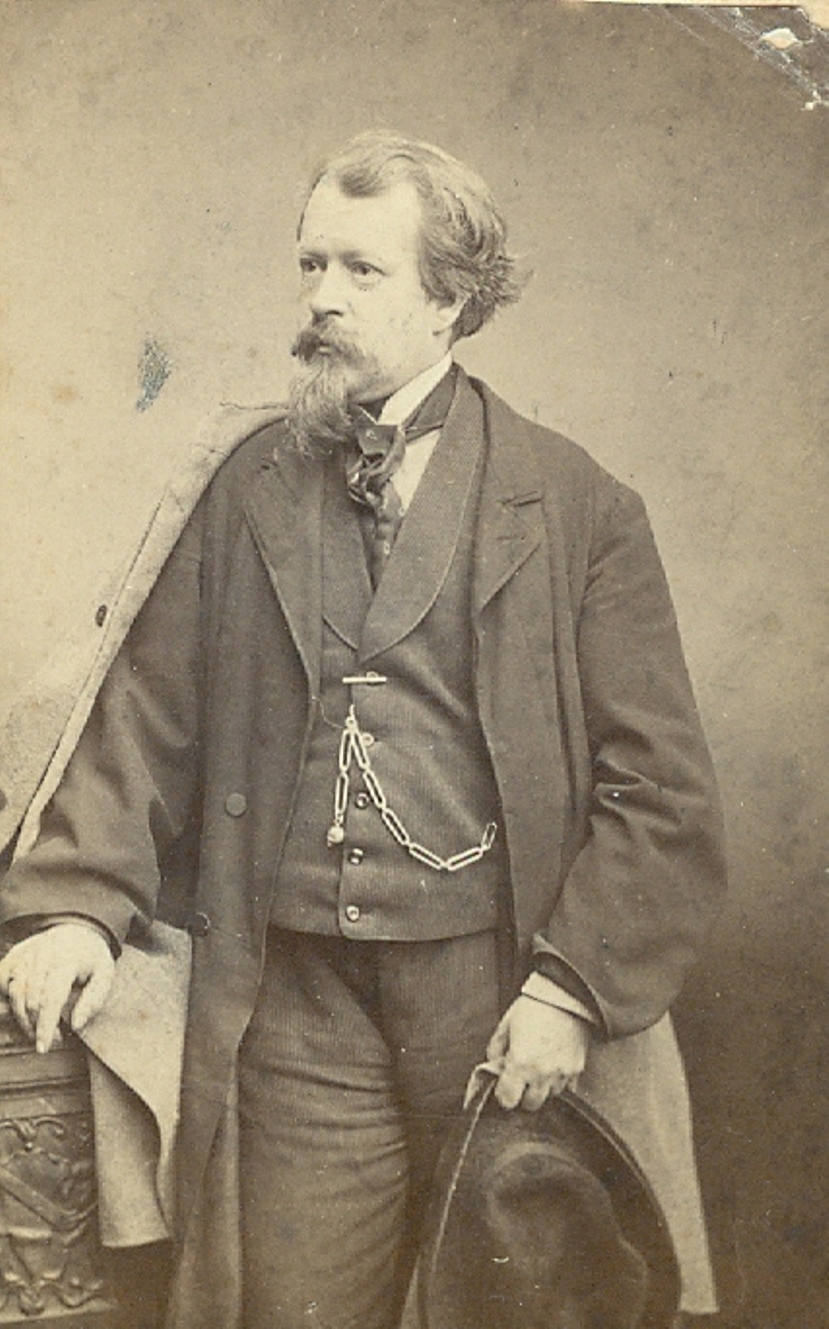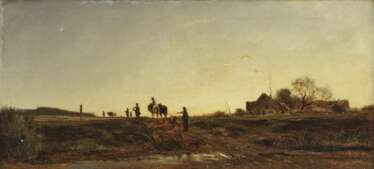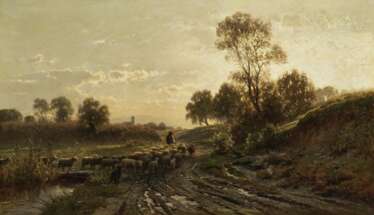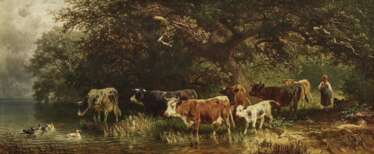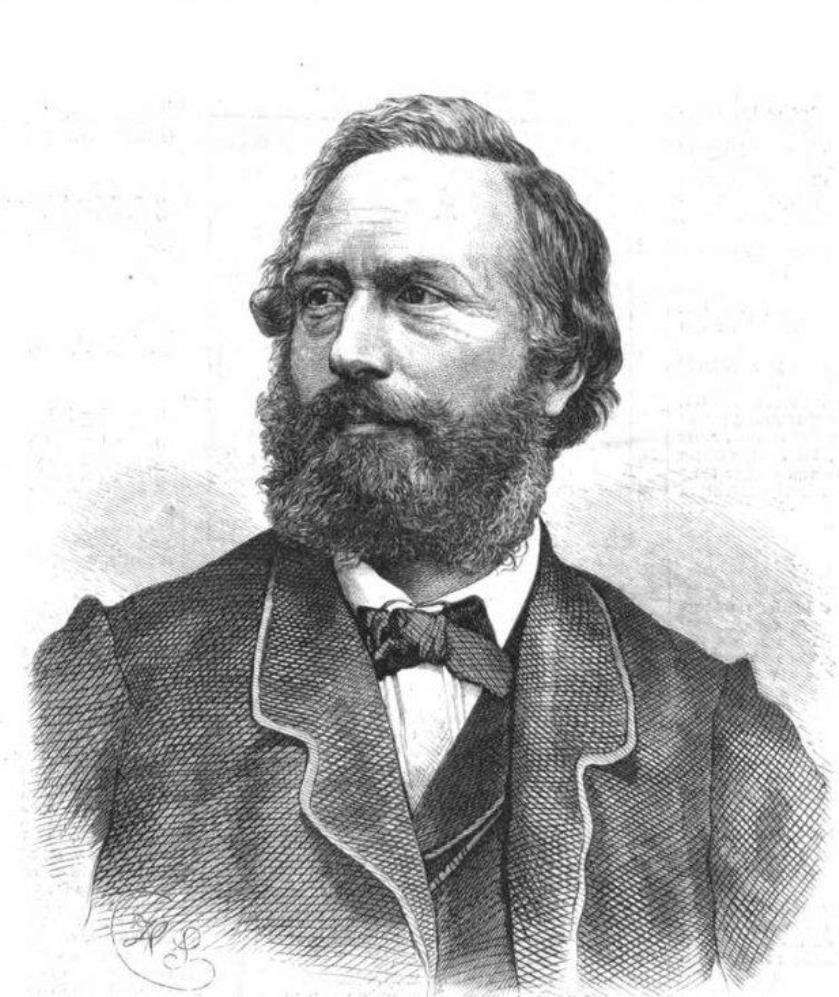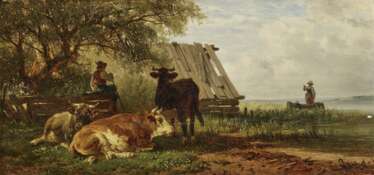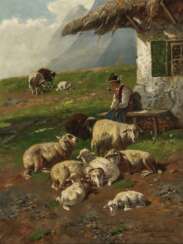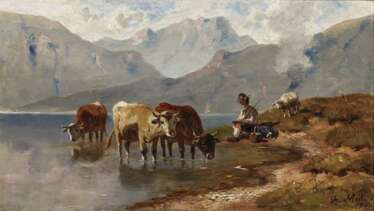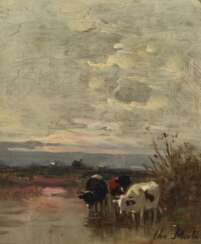
Paintings 19th - 20th century — Fine art auction
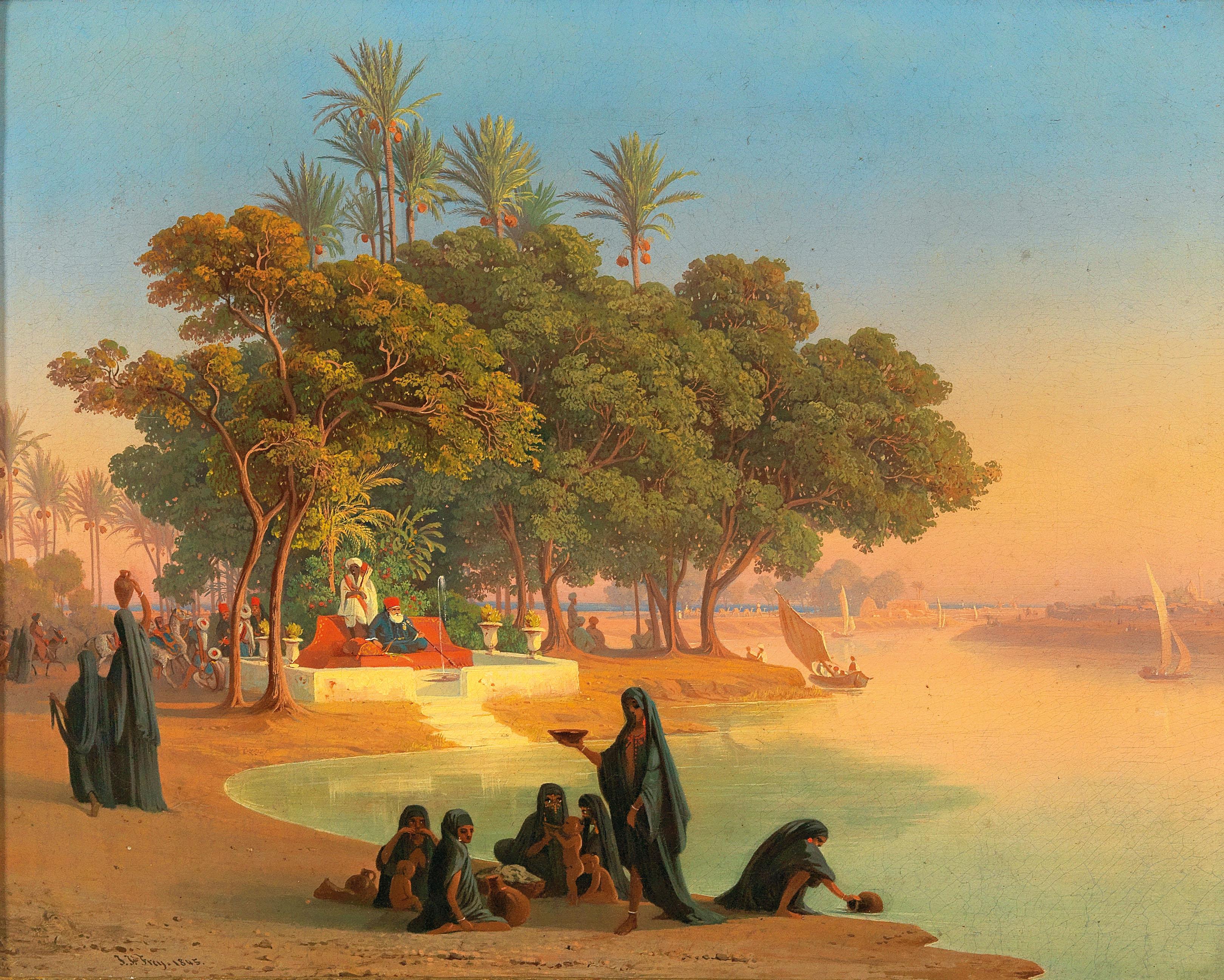
Johann Jakob Frey was a Swiss landscape painter.
Johann Jakob Frey travelled extensively in Italy, especially in and around Rome, making landscape sketches. In his studio he used these sketches to create paintings. He also traveled to Spain and Egypt to sketch for later works.
Frey's pictorial style is based on paintings by Josef Koch or Franz Horny. For example, they often feature a richly detailed foreground, which often shows elements such as winding paths or rivers drawing the viewer's attention away.
Arturo Ferrari is an Italian landscape painter. He studied painting at the Brera Academy in Milan.
The main theme of Arturo Ferrari's work was urban views. In a short time the artist became the "architect of the poetic and sentimental reconstruction" of old Milan.
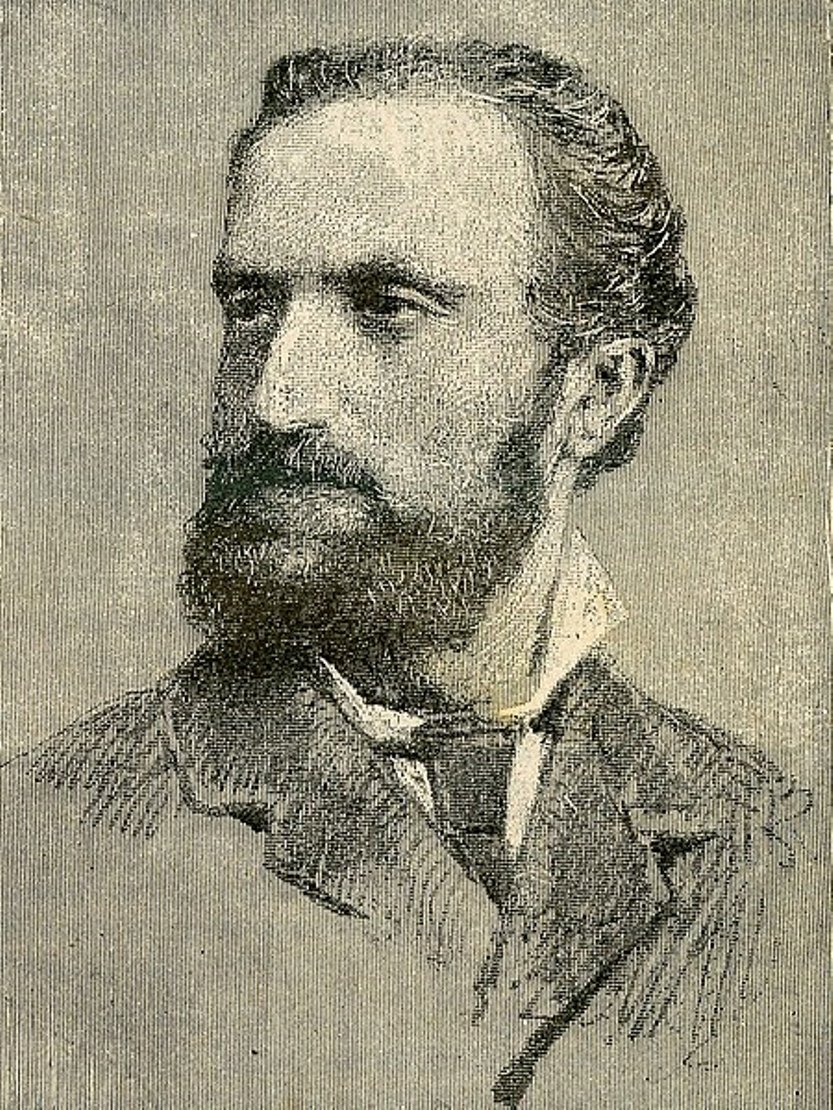
Guglielmo Ciardi was an Italian marine and landscape painter.
Ciardi graduated from the Venice Academy of Fine Arts, traveled extensively throughout the country and made sketches. These include views of the Venetian lagoon with fishing boats and the countryside around Treviso, mountain landscapes painted during his many trips to the cities of Veneto, Trentino and Lombardy.
Guglielmo Ciardi was an active participant in many exhibitions and was awarded a gold medal at the San Francisco Exposition in 1915.
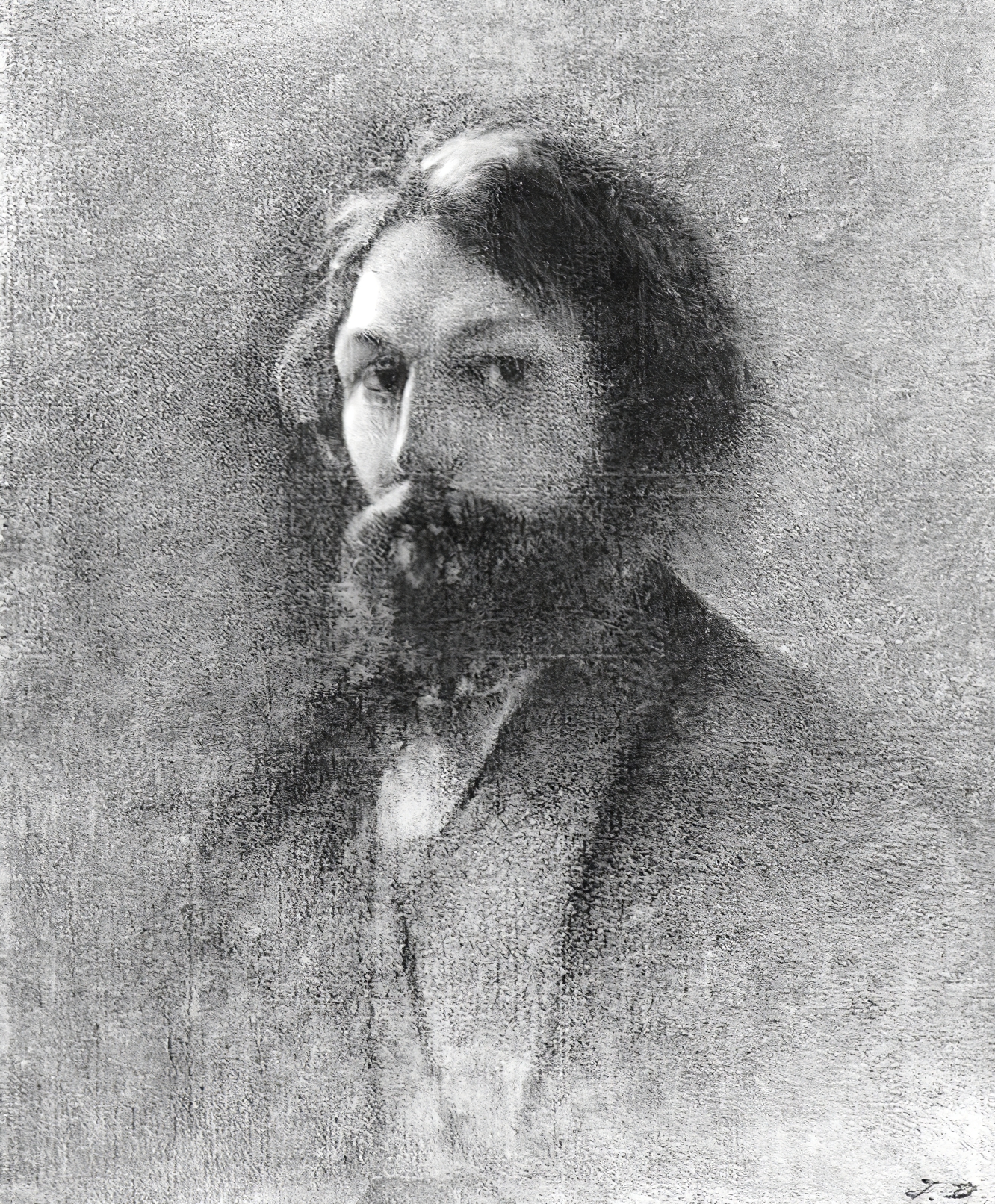
Jules Louis Dupré was a French painter, one of the chief members of the Barbizon school of landscape painters. If Corot stands for the lyric and Rousseau for the epic aspect of the poetry of nature, Dupré is the exponent of its tragic and dramatic aspects.
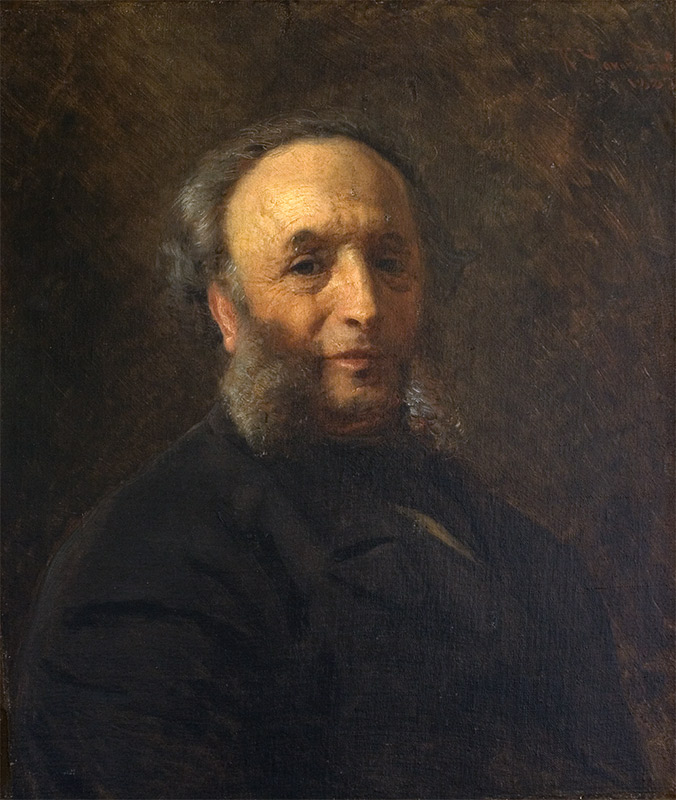
Ivan Konstantinovich Aivazovsky (Russian: Иван Константинович Айвазовский) was a Russian-Armenian painter, celebrated for his mastery in depicting seascapes. Born in 1817 in Feodosia, Crimea, Aivazovsky became one of the most renowned Russian artists of his time, with a career spanning over 60 years during which he created more than 6,000 paintings. His work is characterized by a profound understanding of the play of light on water, capturing the essence of the sea like no other artist of his era.
Aivazovsky's paintings stand out for their dramatic intensity and the emotional depth they evoke. He was particularly adept at illustrating the sea's many moods, from calm, serene waters to tumultuous storms. His ability to depict light, whether it be the tranquil glow of the moon on the water's surface or the fierce blaze of the sun setting over the ocean, was unparalleled. Among his most celebrated works are "The Ninth Wave" and "Among the Waves," both of which showcase his skill in portraying the sea's power and beauty. These masterpieces can be found in prestigious museums and galleries worldwide, including the State Russian Museum in Saint Petersburg and the Tretyakov Gallery in Moscow.
For collectors and experts in the realms of art and antiques, Aivazovsky's oeuvre represents a pinnacle of romantic landscape painting. His works are not only aesthetically magnificent but also embody a rich cultural and historical narrative, making them highly sought after in the art market. If you are passionate about the fusion of culture, art, and history embodied in painting, Ivan Konstantinovich Aivazovsky's works are a testament to the enduring allure of the sea and its many faces.
To stay informed about new product sales and auction events related to Ivan Konstantinovich Aivazovsky, we invite you to sign up for our updates. This subscription ensures you're always in the know about opportunities to add a piece of this legendary artist's legacy to your collection.
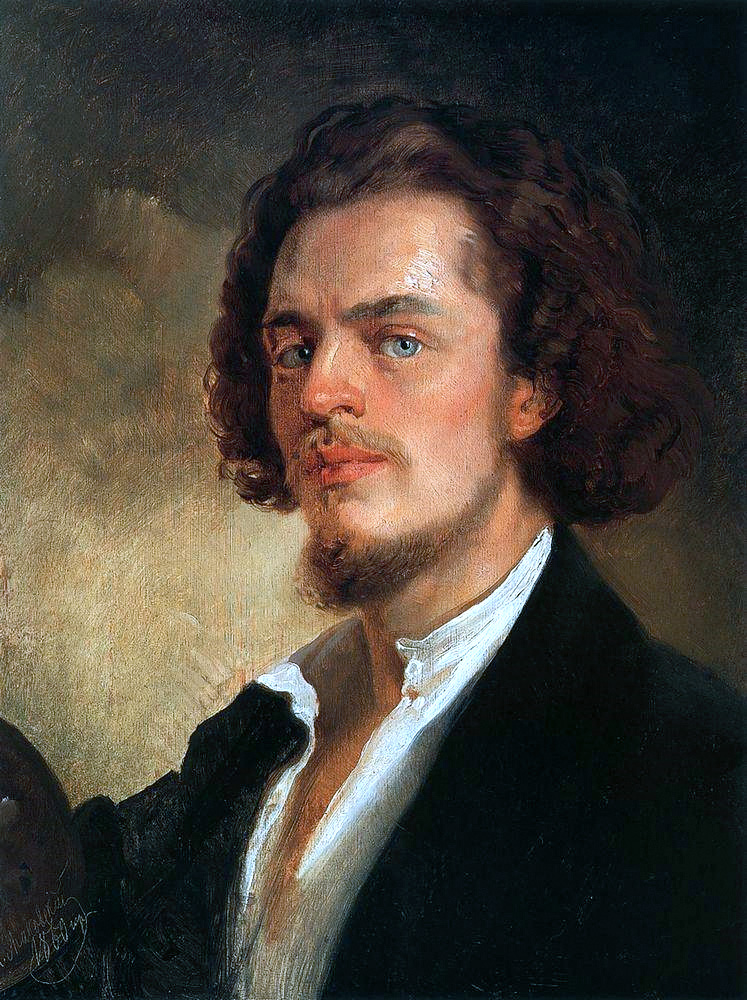
Konstantin Yegorovich Makovsky (Russian: Константин Егорович Маковский) was a renowned Russian painter, celebrated for his romantic and historical paintings that often portrayed an idealized view of Russian life in previous centuries. Born in Moscow in 1839, Makovsky became a pivotal figure in Russian art, distinguishing himself early on at the Moscow School of Painting, Sculpture and Architecture and later at the Imperial Academy of Arts in Saint Petersburg.
Makovsky was a core member of the "Peredvizhniki" or Wanderers, a group advocating for realism and social critique through art. His commitment to depicting the everyday life of old Russia won him accolades, including the Large Gold Medal at the World's Fair in Paris in 1889. Some of his notable works include "The Russian Bride's Attire" and "The Boyar Wedding Feast," which reflect his mastery in capturing the lavish and picturesque aspects of Russian history and culture.
Tragically, Makovsky's life ended in a road accident in Saint Petersburg in 1915, but his legacy lives on through his profound impact on Russian art and culture. His works continue to be highly regarded and are featured in major museums and collections worldwide.
For those interested in exploring Konstantin Makovsky's work further or acquiring pieces related to his artistic legacy, stay updated with our newsletters for announcements on sales and auction events. Sign up to not miss out on the opportunity to own a piece of Russian art history.
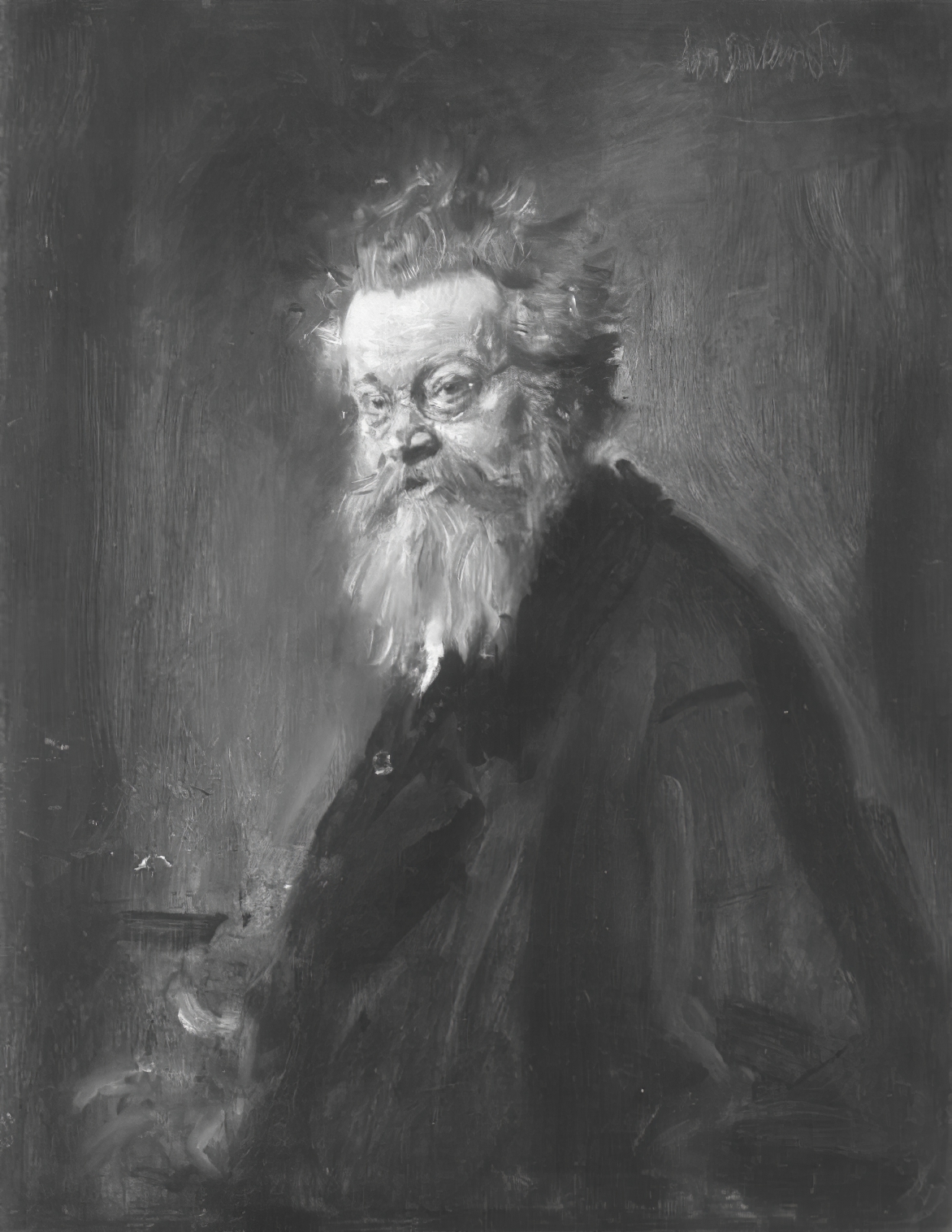
Joseph Wenglein was a German painter who is often referred to as one of the last significant landscape painters of the 19th century Munich school.
Parallel to his law studies Joseph Wenglein studied at the Academy of Fine Arts in Munich. He then switched entirely to art and became a pupil of the landscape painter Johann Gottfried Steffan. On his recommendation, Wenglein sometime later became a pupil of the painter Adolf Heinrich Lier, whose colouristic tendencies, calculated to express profound moods, particularly appealed to him.
Josef Wenglein knew how to reproduce the change of daylight, especially in spring and autumn, with a fine sense of the slightest atmospheric fluctuations and to vary the grey pleasant tone of the Bavarian plateau in all its nuances masterfully.
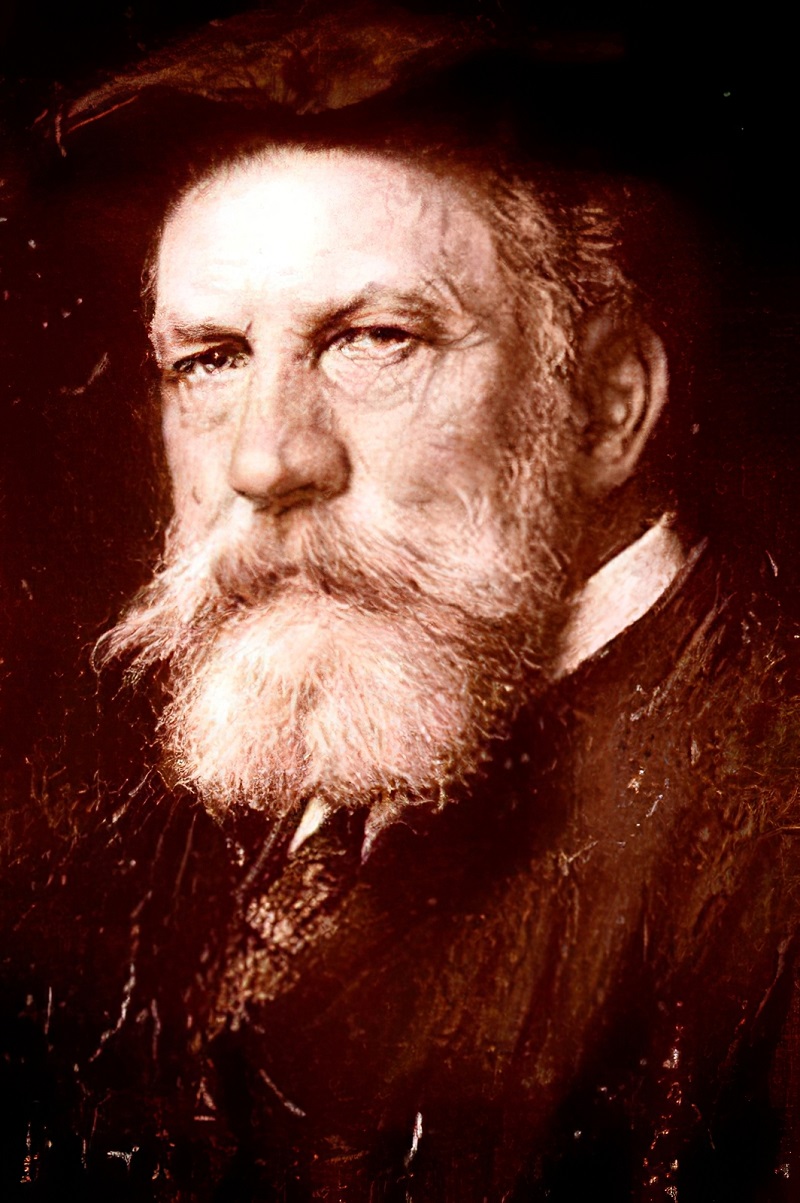
Adolf Schreyer was a German painter of the second half of the 19th century. He is known as an orientalist, landscape, battle and animalist, a representative of the Düsseldorf School of Art. Schreyer served in the Austrian army and participated in a military expedition to Wallachia during the Crimean War.
Schreyer also traveled to Egypt, Syria, and Algeria, where he painted many Orientalist paintings as well as images of horses with riders. His paintings of battle scenes, including events of the Crimean campaign, as well as genre paintings and landscapes, are characterized by vivid colors, vigorous movement, and drama.
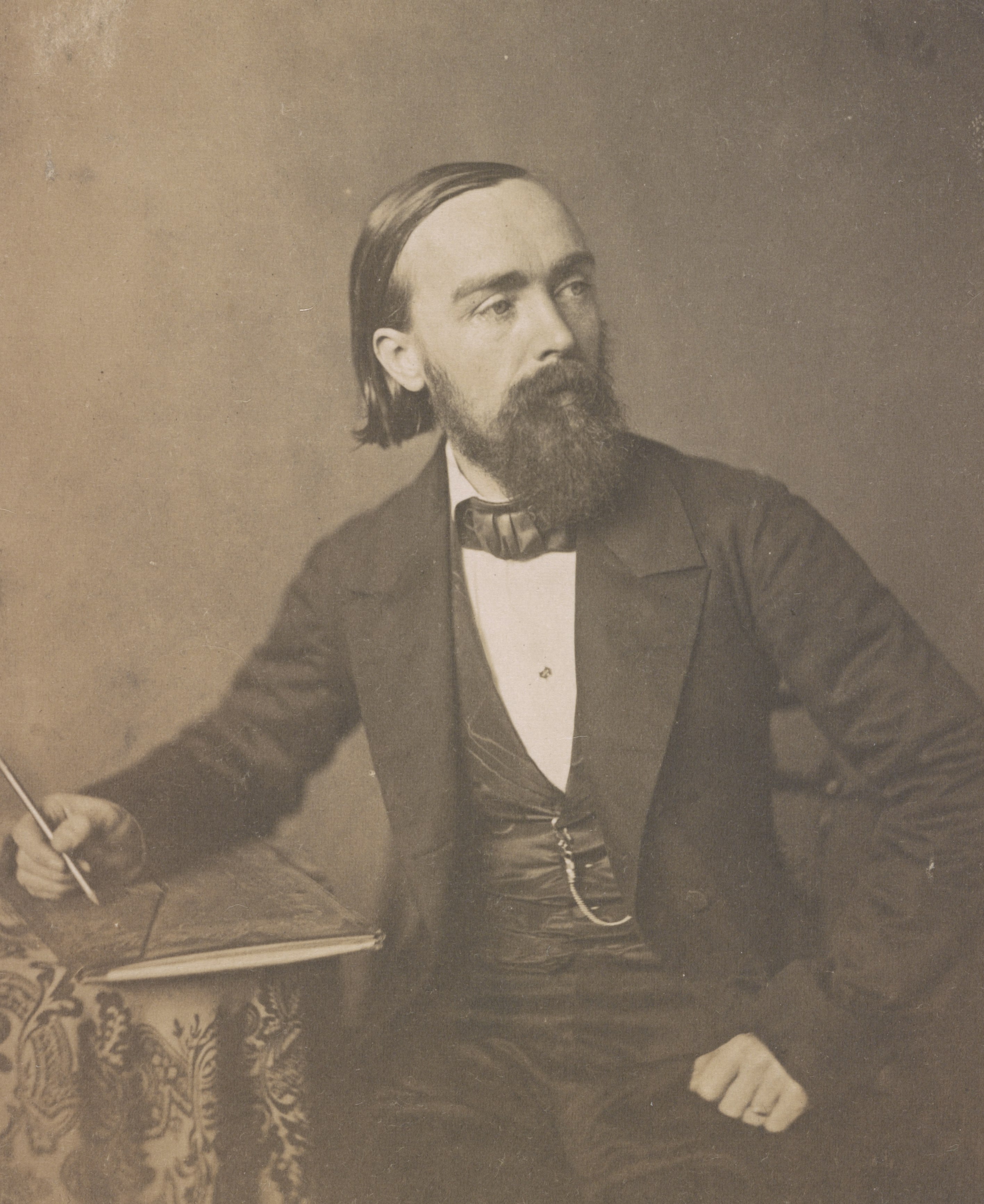
Gottlieb Daniel Paul Weber was a German artist. Weber is known for his ethereal and timeless landscape paintings of early northeast America. He emigrated to the U.S. in 1848 and though he returned to Germany around 1860 his influence on American landscape painting was still felt for years.
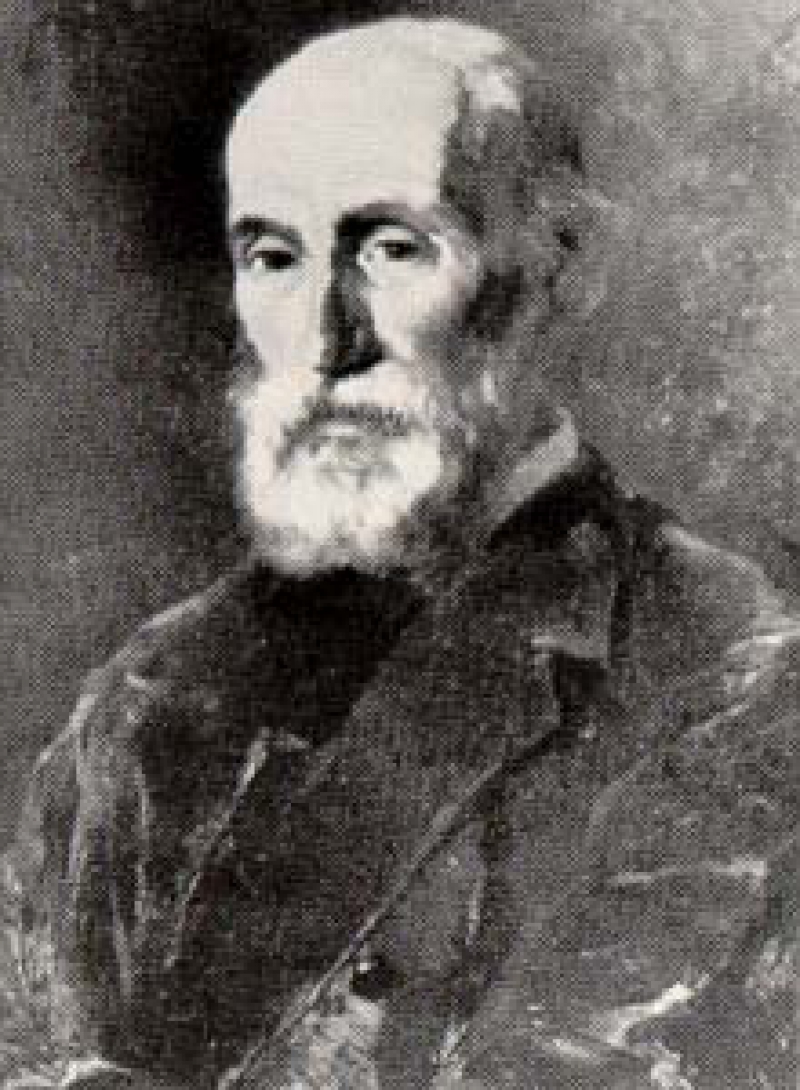
Christian Friedrich Mali was a German painter of the second half of the nineteenth and early twentieth centuries of Dutch origin. He is known as an animalist, landscape painter and genre painter of the Munich school.
Mali focused more on landscapes early in his career, favoring the landscapes of Garmisch-Partenkirchen and the Swabian Alps. After traveling to Italy, he pursued architectural painting. He later moved to Paris, where he became interested in animalistic painting, creating genre images depicting domestic animals.

Christian Friedrich Mali was a German painter of the second half of the nineteenth and early twentieth centuries of Dutch origin. He is known as an animalist, landscape painter and genre painter of the Munich school.
Mali focused more on landscapes early in his career, favoring the landscapes of Garmisch-Partenkirchen and the Swabian Alps. After traveling to Italy, he pursued architectural painting. He later moved to Paris, where he became interested in animalistic painting, creating genre images depicting domestic animals.

Christian Friedrich Mali was a German painter of the second half of the nineteenth and early twentieth centuries of Dutch origin. He is known as an animalist, landscape painter and genre painter of the Munich school.
Mali focused more on landscapes early in his career, favoring the landscapes of Garmisch-Partenkirchen and the Swabian Alps. After traveling to Italy, he pursued architectural painting. He later moved to Paris, where he became interested in animalistic painting, creating genre images depicting domestic animals.


